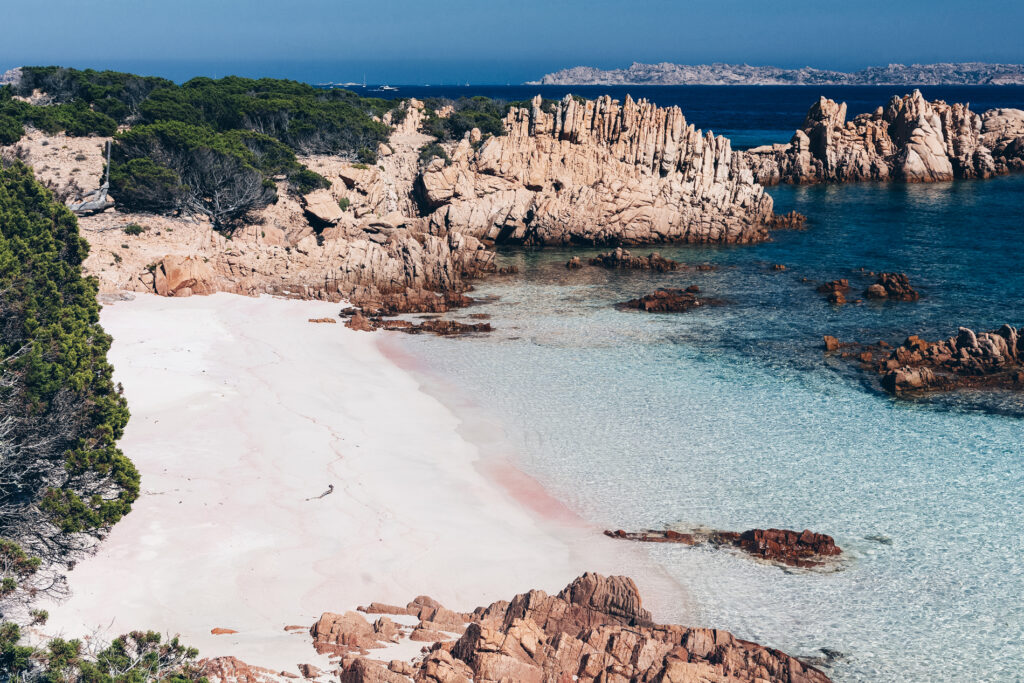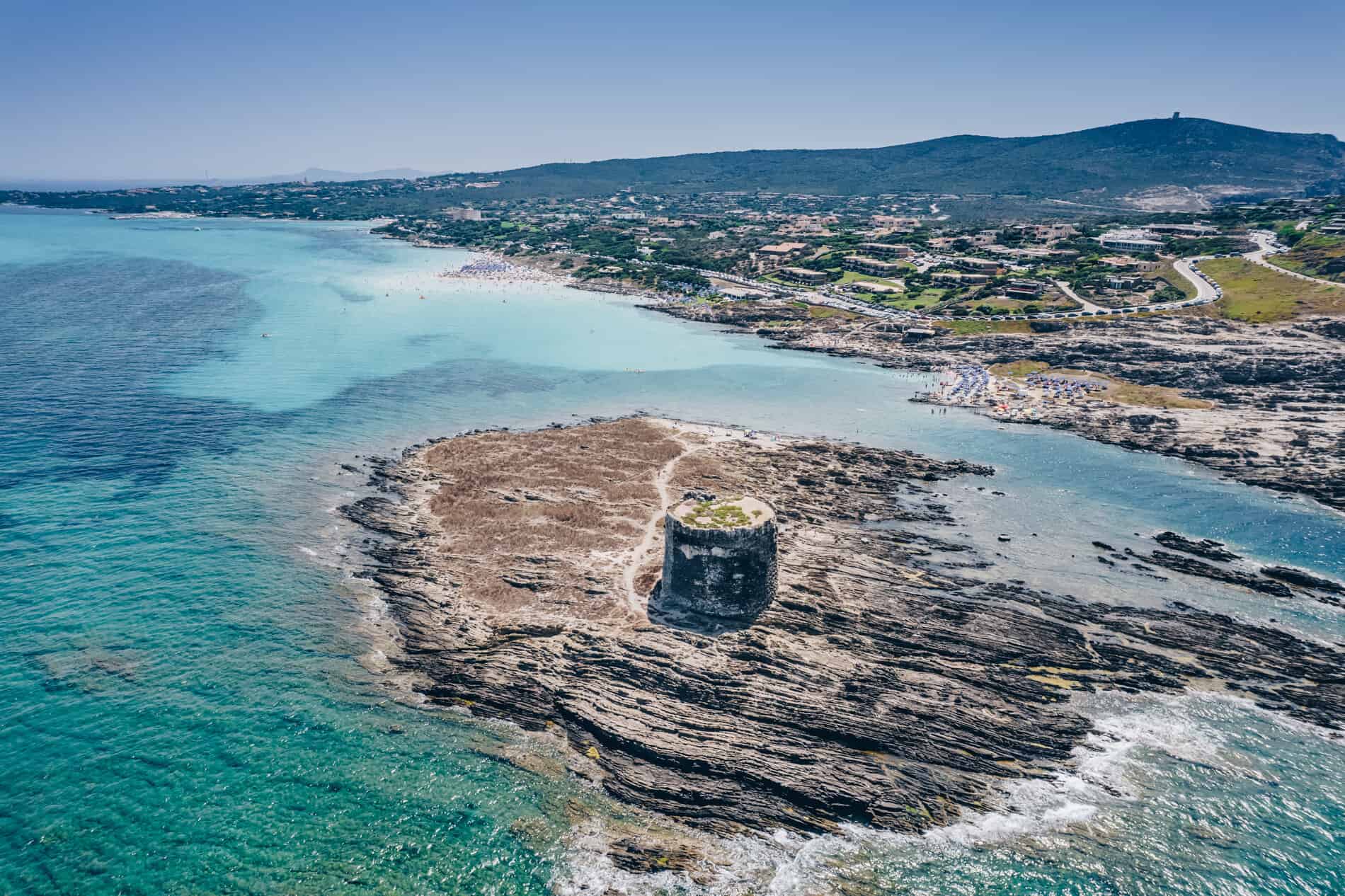With more than 4,000 miles of coastline, Italy is a beach destination nonpareil. From the Amalfi Coast to the shores of the Adriatic, visitors flock to the Mediterranean nation in spring, summer and fall to while away the hours on a beach sipping pesche al vino while getting their requisite vitamin D.
Beaches in Italy tend to be pebbly or rocky as is the norm in the Mediterranean. That can make wading in the water a nightmare if you don’t have proper footwear. For anyone looking for the best sandy beaches, head to Sardinia, the second-largest island in the Mediterranean.
In antiquity, Sardinia was called Ichnusa, from the Greek word Ichnos, which means “footprint,” as in the shape of the island. Ichnusa was the seat of numerous ancient civilisations, the most mysterious and notable being the indigenous Nuragic, who flourished in the region around 1500 B.C. and who crafted the traditional, cone-shaped homes—7,000 in all—the island is famous for.

World-renowned for its astonishing nature, Sardinia boasts a little bit of everything: mountains, forests, plains, and, of course, beaches, islets and coves. Sardinia’s beaches for the most part feature golden sand that you can sink your toes into. Then there’s the turquoise water and the bustling resort towns.
With so many places to discover, you’re really spoiled for choice. We’ve narrowed down the top sunny escapes on the island to the five best beaches—that are not in Costa Smeralda—on Sardinia for a summer holiday. So, pack that bathing suit, grab your sunglasses and head to the island writer DH Lawrence called, “Something else. It is like freedom itself.”
La Pelosa di Stintino
Situated on the northwest end of the island, just one-and-a-half miles from Stintino, a former fishing village, La Pelosa di Stintino is a small stretch of paradise in an area dotted with bustling resorts.
Expect compact, fine sand that is almost white in hue. Lay back on your lounger and watch the water change colour, from light blue to azure to turquoise, depending on the position of the sun. The beach is fronted by tongues of rocky land with an almost lunar appearance and a small island which houses the Pelosa tower, a fortification of Catalan-Aragonese origin. Today, the tower seems to emerge like a solitary witness from the waters.

Sardinia boasts a plethora of eco-friendly and sustainable beaches and La Pelosa di Stintino is one. Access is restricted and rules are strictly enforced. A maximum of only 1,500 people are allowed access each day. Reservations can be made online via www.lapelosastintino.com (from June onwards) and the entry fee is only 3.50 euros. A bathing mat is also required, as it’s forbidden to place your beach towel directly on the ground—the ecosystem here is very sensitive. Cleanliness and silence are also basic requirements, so smoking at the entrance or using balls and rackets
are prohibited.
But don’t let that deter you as you’ll be rewarded with truly unparalleled views of sun, sand and sea in a location that harkens back to a glorious past.
But don’t let that deter you as you’ll be rewarded with truly unparalleled views of sun, sand and sea in a location that harkens back to a glorious past.

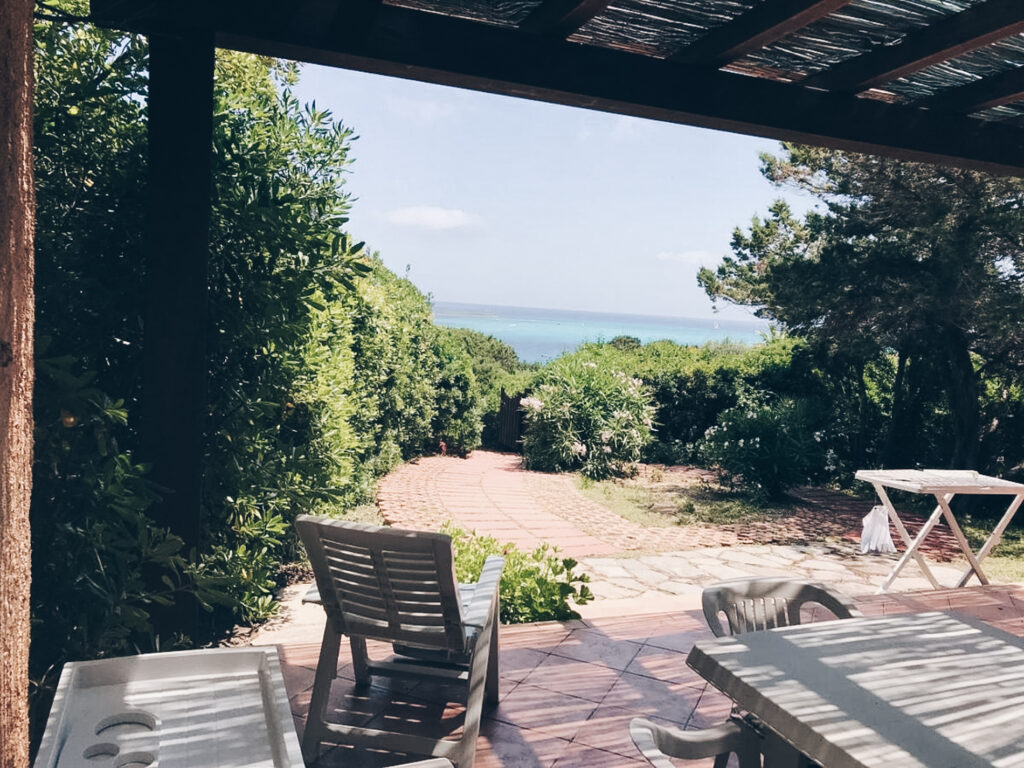
Cala Goloritzè
Declared a Unesco World Heritage Site in 1995, Cala Goloritzè in the province of Nuoro is often ranked as one of the most beautiful beaches in the world and with good reason. Situated on the central-eastern coast of Sardinia, in the Gulf of Orosei, Cala Goloritzè can only be reached by foot or by boat. Small boats from Santa Maria Navarrese “strand” visitors about 1,000 feet from the coast. This is done to preserve the integrity of the beach as too much boat and foot traffic would harm its fragile ecosystem, not to mention its beauty.
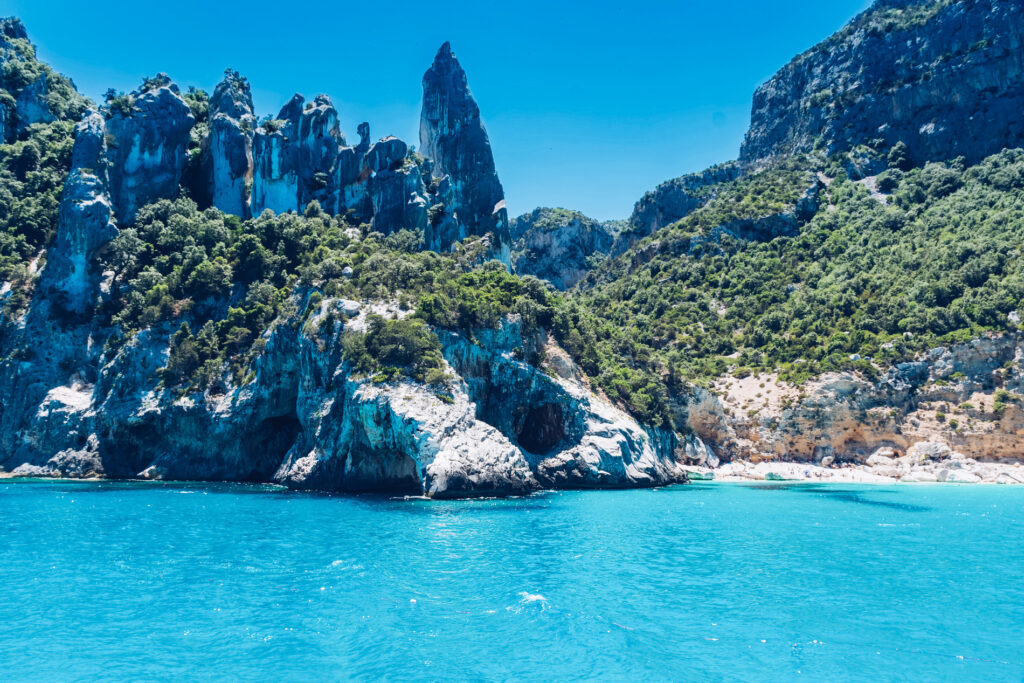
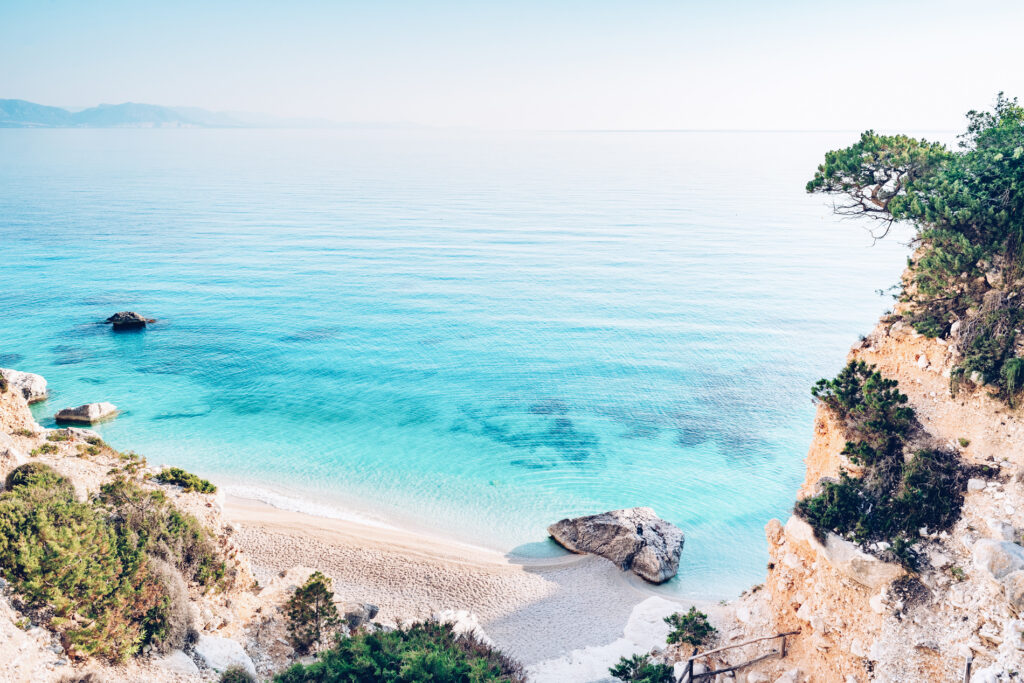
If you’d rather go on foot, the journey takes about an hour and starts in Golgo di Baunei, near the Su Porteddu locality, winding its way through a forest of Mediterranean scrub, with enchanting views and vantage points, and ancient sheepfolds carved into the rock. Although it’s a long trek, the path is well-formed and fairly easy, but bring shoes and plenty of water.
All that effort, whether by sea or foot, is worth it when you reach Cala Goloritzè. The seemingly incongruous combination of sea and mountains flows together to create something powerful.
While the shore is a bit pebbly, the water at Cala Goloritzè boasts shades of green and turquoise, and the underwater springs provide constant changes in hue. The sea here is full of fish, particularly sea bream, and snorkelling or scuba diving afford
real treasures.
While this is one of the most picturesque beaches in all of Italy, the area is about as spartan as you can get i.e. no restaurants or hotels nearby. Bring your own food and water but remember to take all your trash with you when you leave. Access to the beach costs five euros and is available from 7:30 am to 7:30 pm
If you want to extend your stay, lay your head in Baunei at the Issicoro B&B. The cosy manse offers a small selection of pastel-coloured rooms and peaceful surroundings. Breakfast includes handmade cakes and pastries so fill up before heading to
Cala Goloritzè.
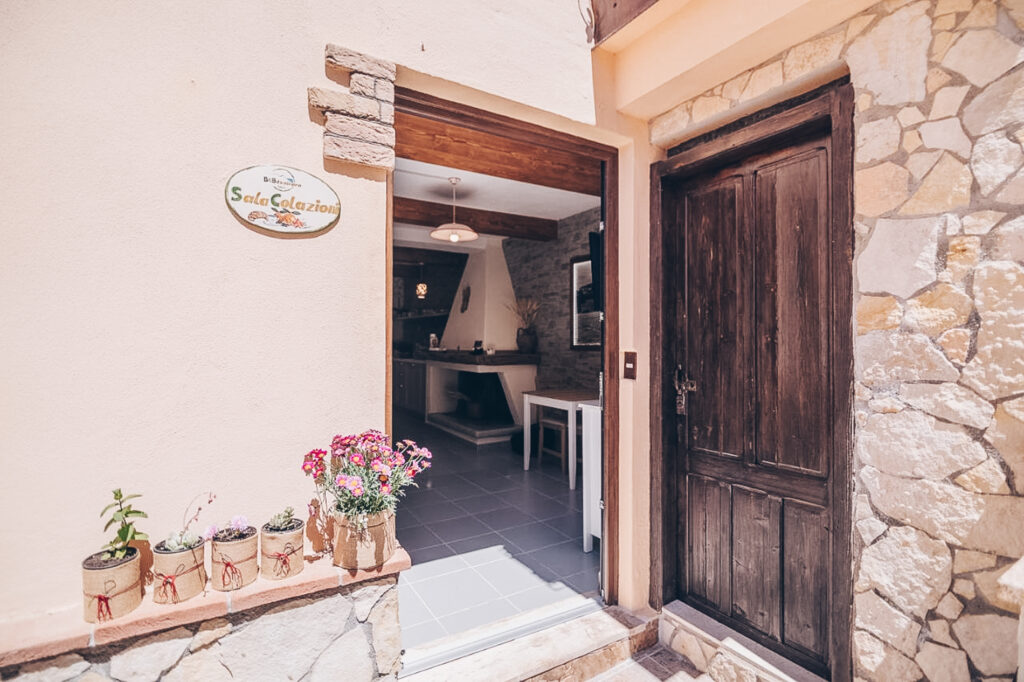
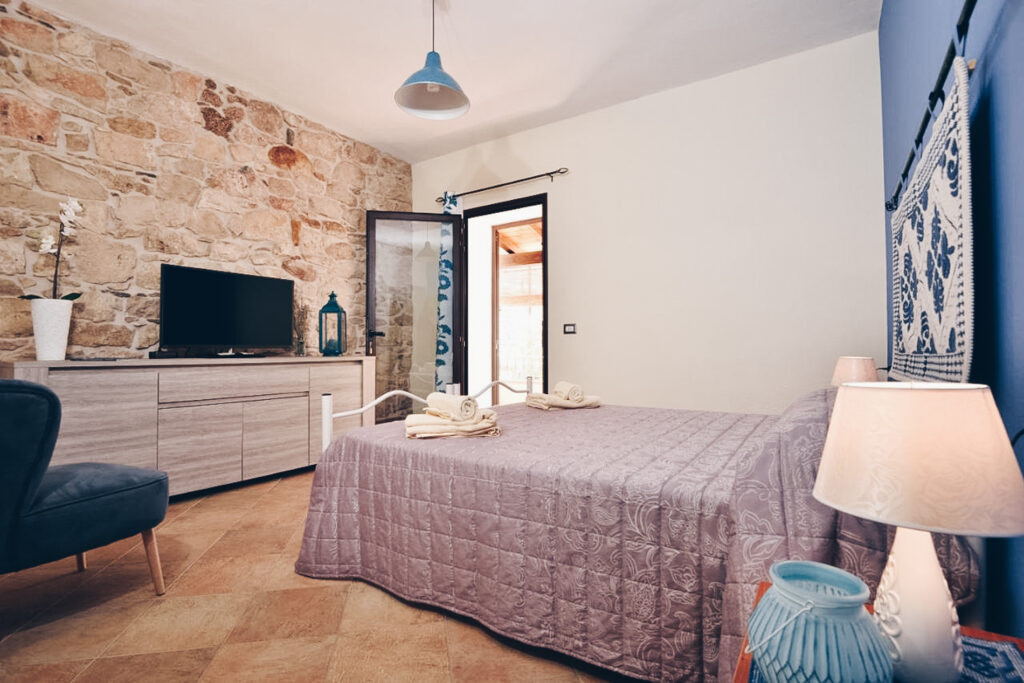
Porto Giunco (Villasimius)
Travelling down the Southeast coast of Sardinia, you’ll reach Villasimius, a lively tourist area that was once a fishing centre. The area has retained an authentic atmosphere thanks to hearty locals and underdevelopment.
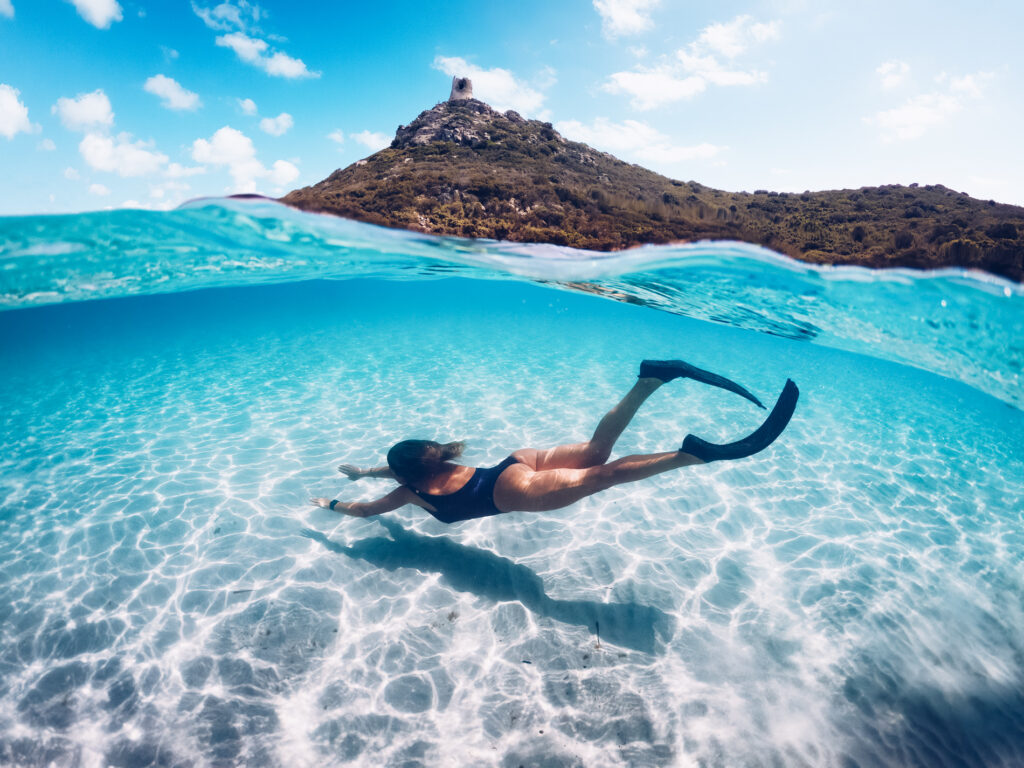
The bustling harbour boasts a 17th-century fortress, which hosts art exhibitions. The charming village, crisscrossed with alleys and cosy boutiques and shops, affords guests many sports for a pleasant aperitif. Baccusardus serves a wide selection of Italian and Old World wines as well as craft beer such as Ichnusa beer, which can be accompanied by local cheese and antipasti.
If you are looking for a little movida, you’ll find a lively bar and disco scene to keep the night going. However, the perfect beaches that dot the area make Villasimius such a delight. All are worthy of a detour but Porto Giunco, a tropical-looking beach with fine, white sand that takes on shades of pink, is about as perfect as you
can get.
The seabed here is shallow, naturally allowing one to relax. Wade in the waters and let your troubles wash away. The central part of the beach boasts a homonymous pond where pink flamingos can be seen. On the right side, on a promontory, admire the remains of an ancient Spanish watchtower from the 16th century, which can also be reached by following a path from the beach.
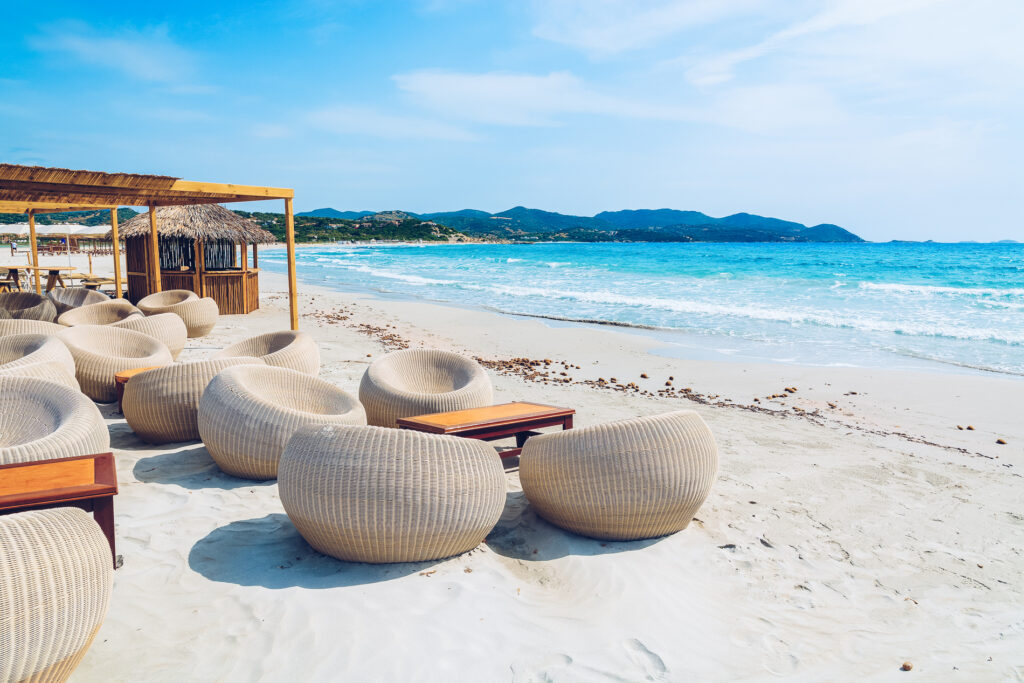
The beach is largely free, but you also have the option of renting sunbeds, straw umbrellas and hammocks. The walkways are accessible to anyone with mobility issues.
Cala Brandinchi (San Teodoro)
Cala Brandinchi lies on the eastern part of the island, on the coastline near San Teodoro and the Tavolara marine protected area. Nicknamed “little Tahiti” for its resemblance to Polynesian islands such as Bora Bora and Moorea, Cala Brandinchi offers plentiful white sand and the clearest turquoise sea this side of Rangiroa.

Here the seabed remains shallow for dozens of feet, creating a pool effect that makes it ideal for families with young children or anyone with mobility issues. Where the rocks come to the surface, you’ll find rich marine life, to be explored leisurely with a mask and snorkel. The cove is equipped with all amenities and, in addition to renting a sunbed and umbrella, you can rent paddle boats, kayaks and canoes for a more intimate trip on the water. Birdwatchers head to the nearby Brandinchi pond where herons and pink flamingos abound.
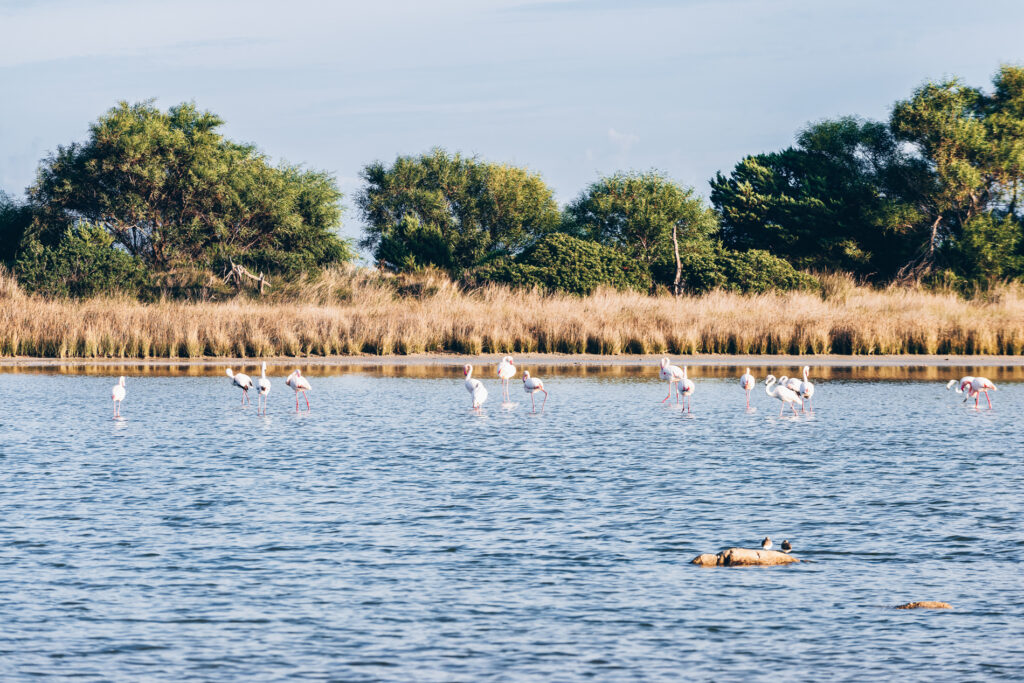
Fun Fact: On October 17, 1867, revolutionary Guiseppe Garibaldi escaped from the nearby island of Caprera and embarked on his journey to liberate Rome from Cala
Brandinchi.
Spiaggia Rosa
Alas, not all beaches are accessible to visitors but that doesn’t mean we can’t admire them from afar. Sometimes just the view of the land from the sea can inspire sonnets and the writer in all of us.
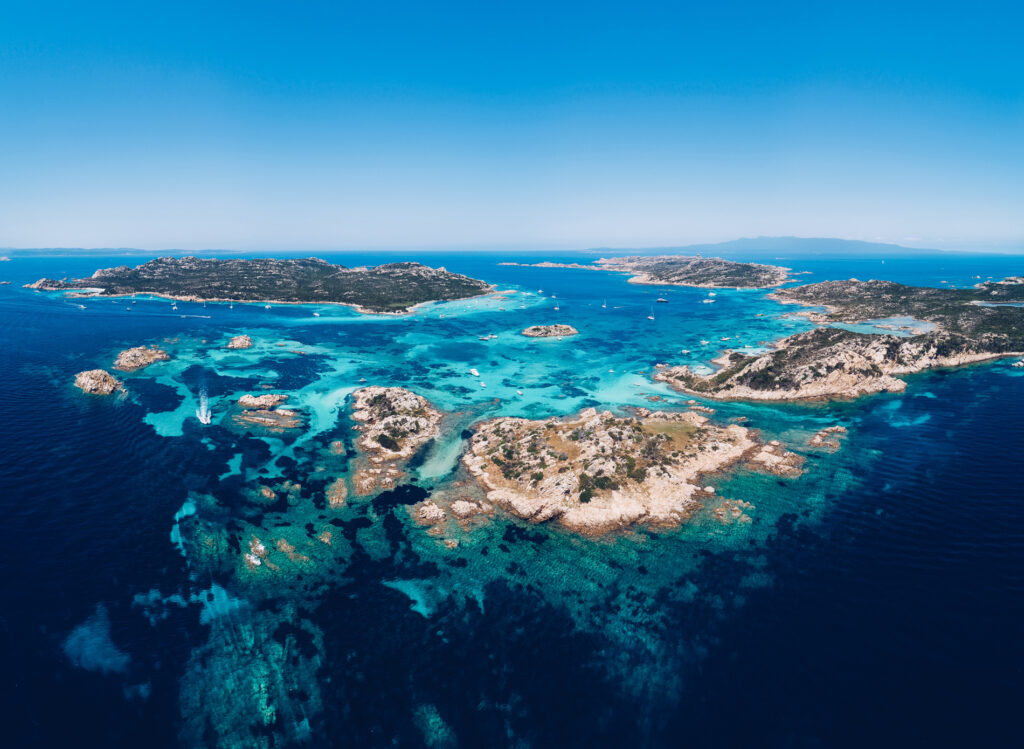
It is no mystery that some of the most beautiful beaches in Sardinia can be found on the Maddalena archipelago, which comprises 62 islands and islets. The two most important—and the only ones inhabited—are La Maddalena and Caprera. La Maddalena is easily accessible by ferry from Palau and, in itself, offers an incredible sensory experience: The water as far as the eye can see takes on colours ranging from turquoise to emerald, and the entire area, part of the La Maddalena Archipelago National Park, is populated by numerous species of marine mammals, from dolphins to fin whales.
From La Maddalena, take a tour of the island of Budelli. Spiaggia Rosa aka the Pink Beach owes its name to the surprising colour of the sand, due to microorganisms that live inside the shells that wash up on shore. These microorganisms mix with pieces of coral and granite, creating the bubblegum hue. The clear waters of the sea break on the pinkish shoreline, creating a marvellous visual effect, which was all captured in Michelangelo Antonioni’s film, Red Desert.
Access to the beach, as mentioned, is prohibited, to safeguard its fragile ecology, but you can enjoy the spectacle from the tour boat. It will remind you of the words of DH Lawrence: freedom itself.
